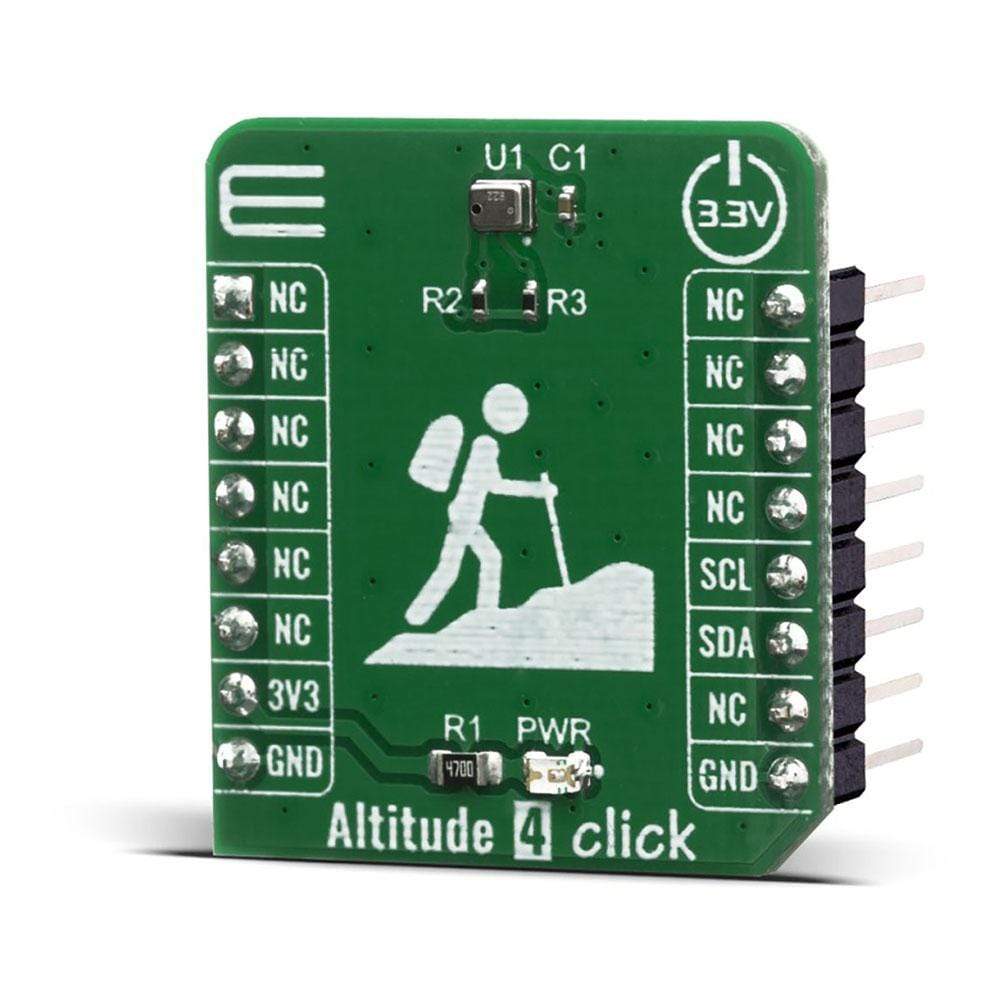
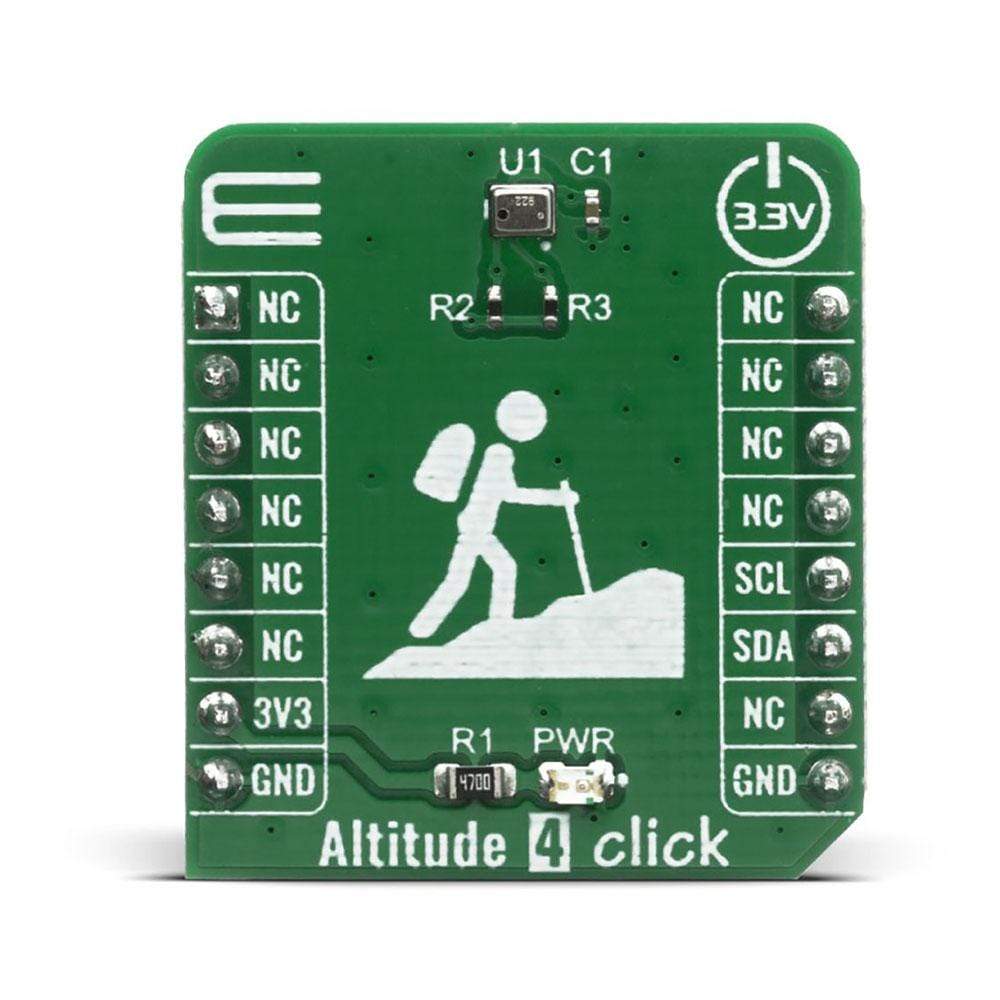
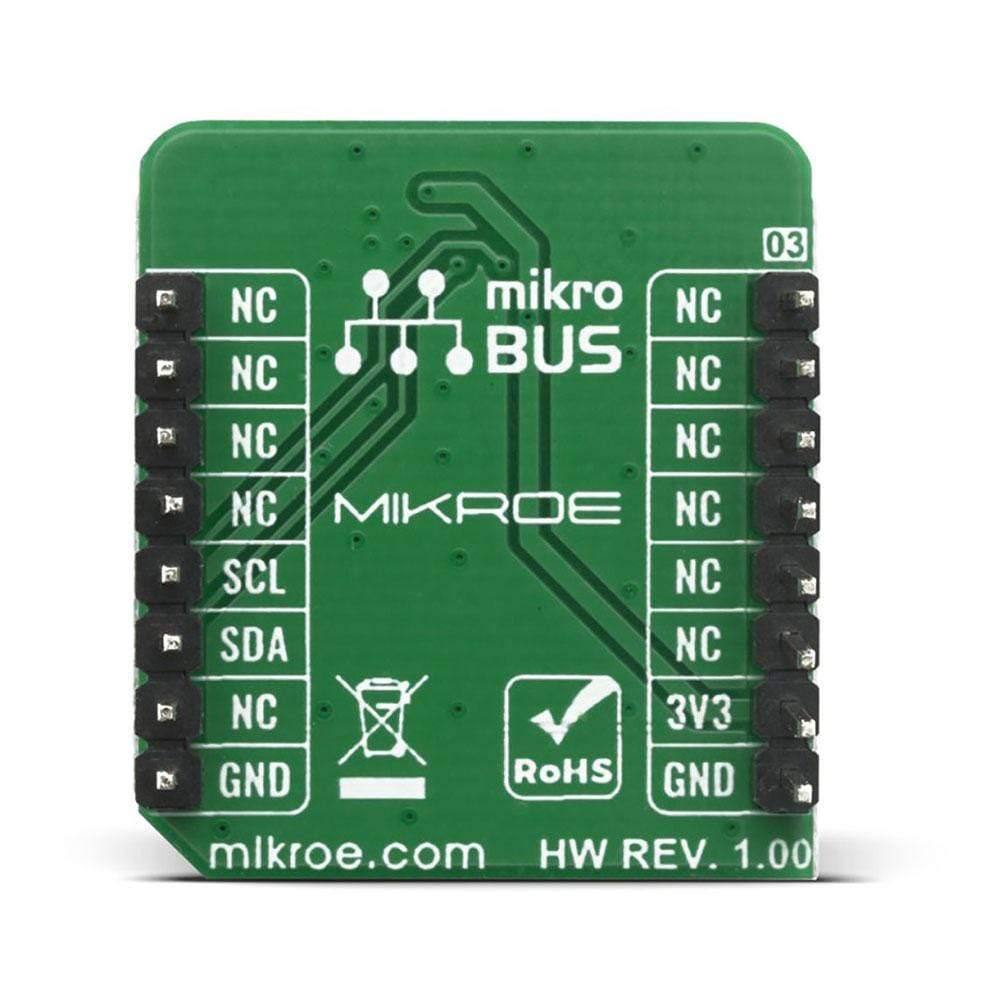
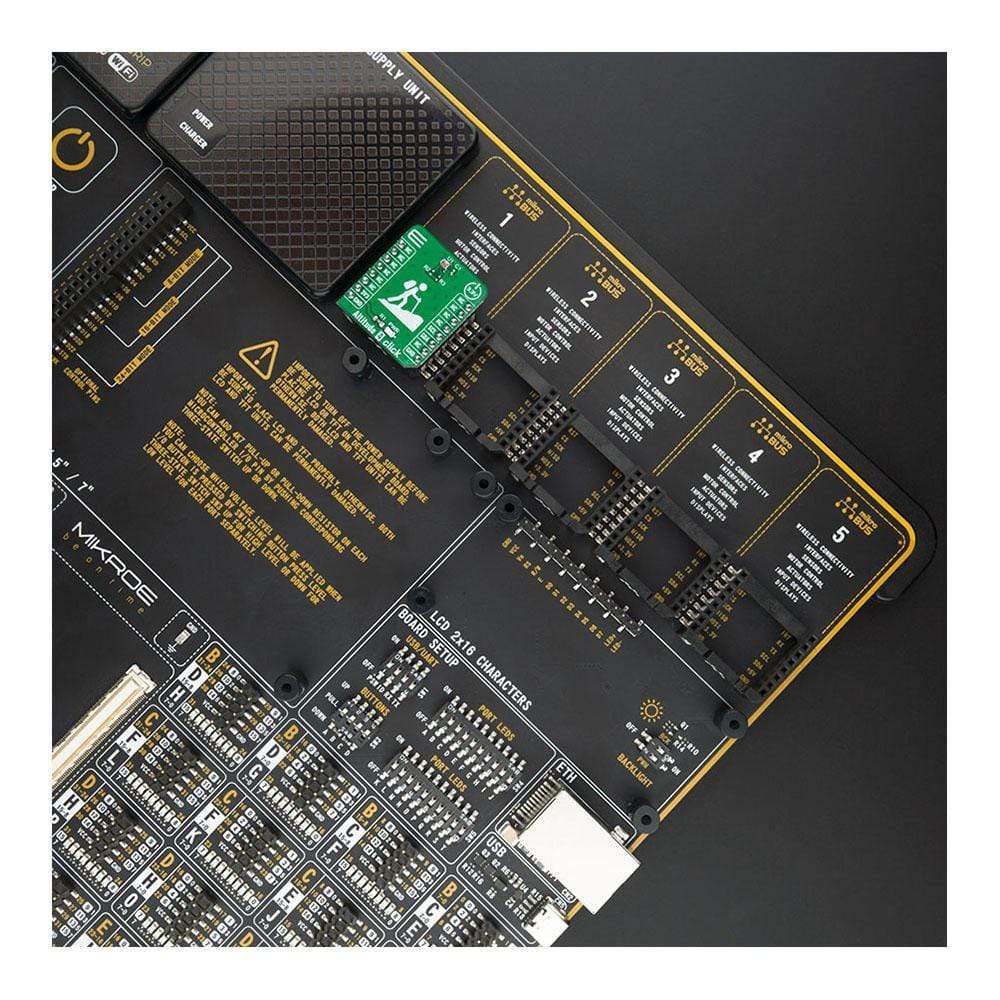
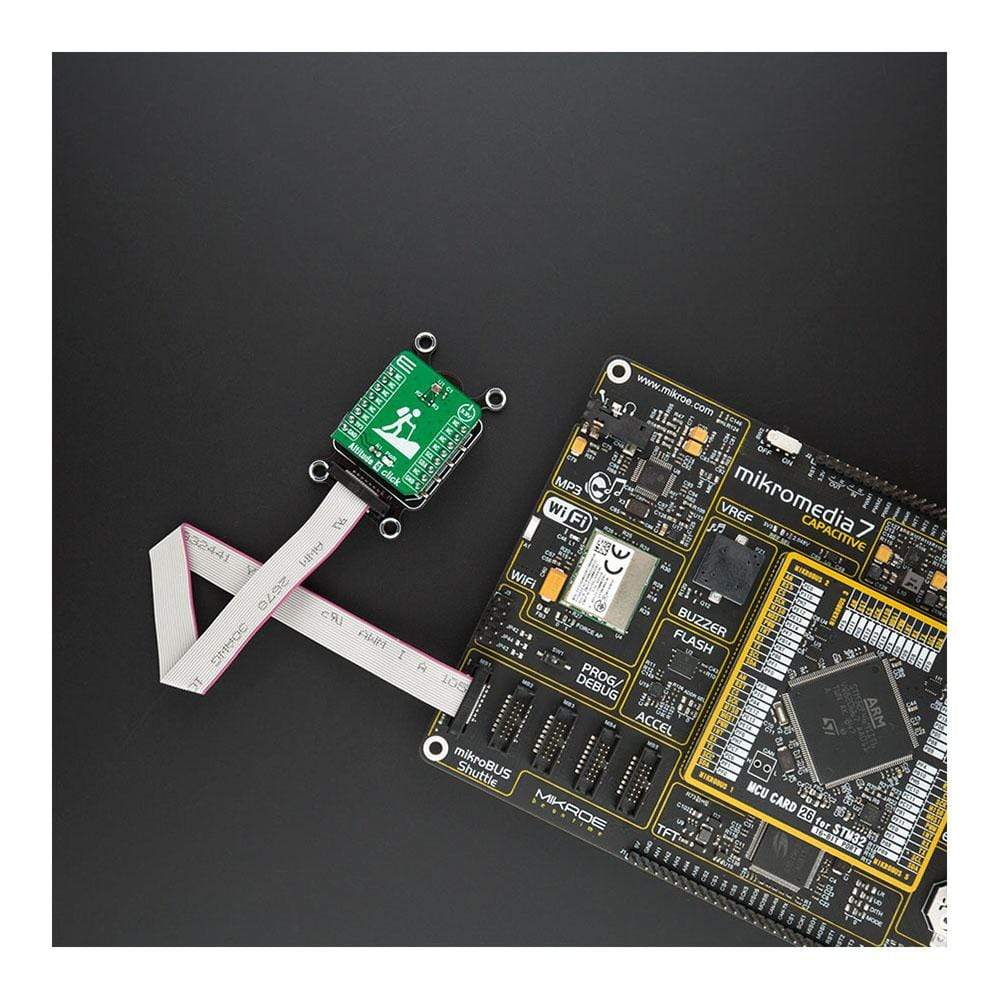
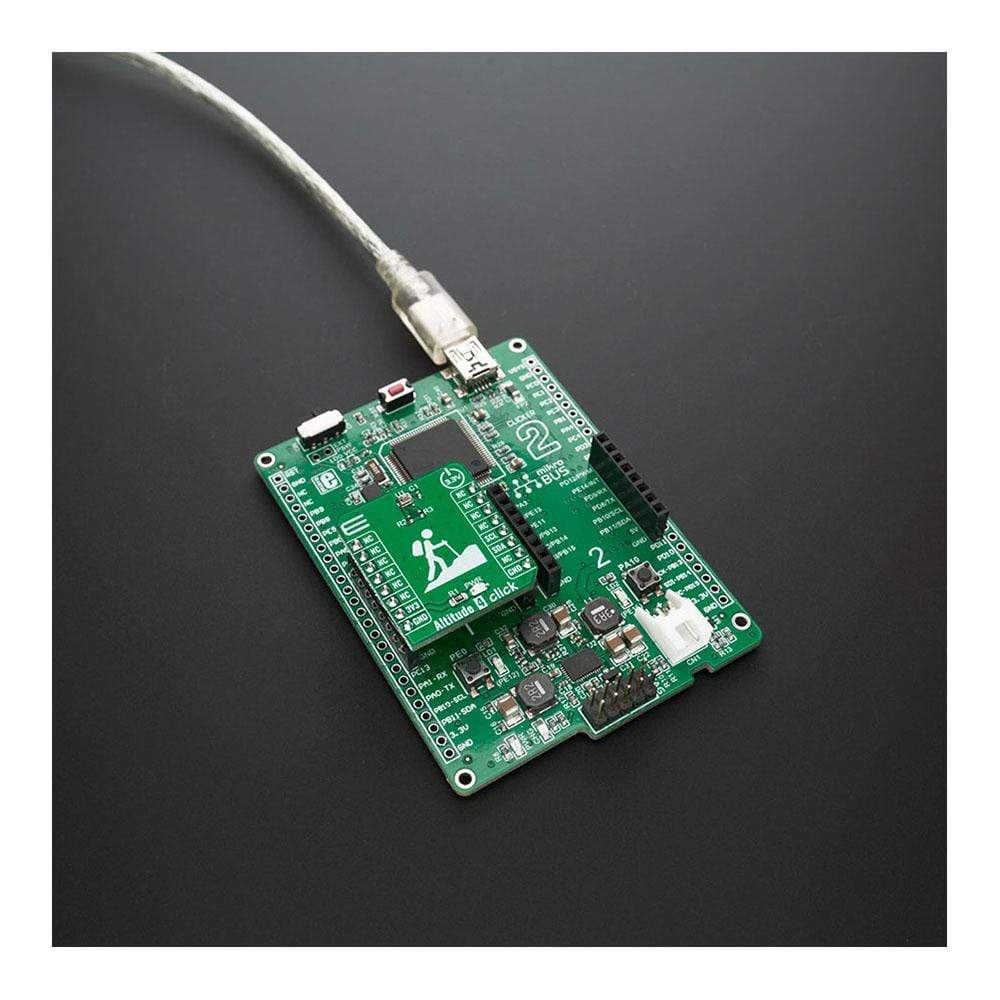
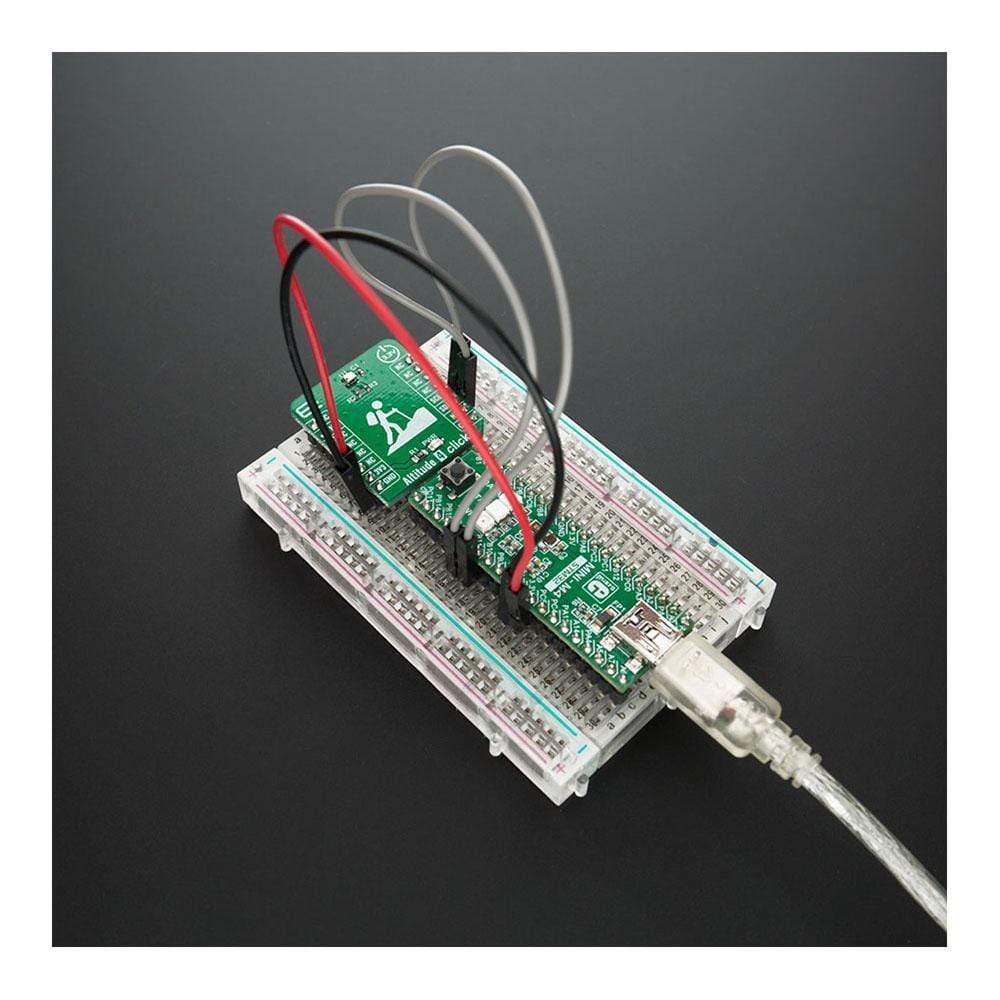
Overview
The Altitude 4 Click Board™ introduces an absolute pressure sensor with digital output for low-cost applications labelled as NPA-201. Altitude 4 Click Board™ employs a MEMS pressure sensor with a signal-conditioning IC to provide accurate pressure measurements from 260 to 1260 mBar. Measurement values are provided at the digital output pins through an I2C interface. This sensor provides NPA-201 Digital Output Absolute Pressure Sensor provides low power consumption and compact size, making it ideal for battery-powered and mobile applications or any application where size is a constraint.
In today’s growing market for portable electronics and wearables with multiple parameters being measured, many applications require an accurate measurement of barometric pressure to determine factors such as altitude.
Downloads
Le Altitude 4 Click Board™ présente un capteur de pression absolue avec sortie numérique pour les applications à faible coût, appelé NPA-201. Le Altitude 4 Click Board™ utilise un capteur de pression MEMS avec un circuit intégré de conditionnement de signal pour fournir des mesures de pression précises de 260 à 1260 mbar. Les valeurs de mesure sont fournies aux broches de sortie numérique via une interface I2C. Ce capteur fournit un capteur de pression absolue à sortie numérique NPA-201 offrant une faible consommation d'énergie et une taille compacte, ce qui le rend idéal pour les applications alimentées par batterie et mobiles ou toute application où la taille est une contrainte.
Sur le marché actuel en pleine croissance de l'électronique portable et des objets connectés avec de multiples paramètres mesurés, de nombreuses applications nécessitent une mesure précise de la pression barométrique pour déterminer des facteurs tels que l'altitude.
| General Information | |
|---|---|
Part Number (SKU) |
MIKROE-4127
|
Manufacturer |
|
| Physical and Mechanical | |
Weight |
0.018 kg
|
| Other | |
Country of Origin |
|
HS Code Customs Tariff code
|
|
EAN |
8606018717477
|
Warranty |
|
Frequently Asked Questions
Have a Question?
Be the first to ask a question about this.







